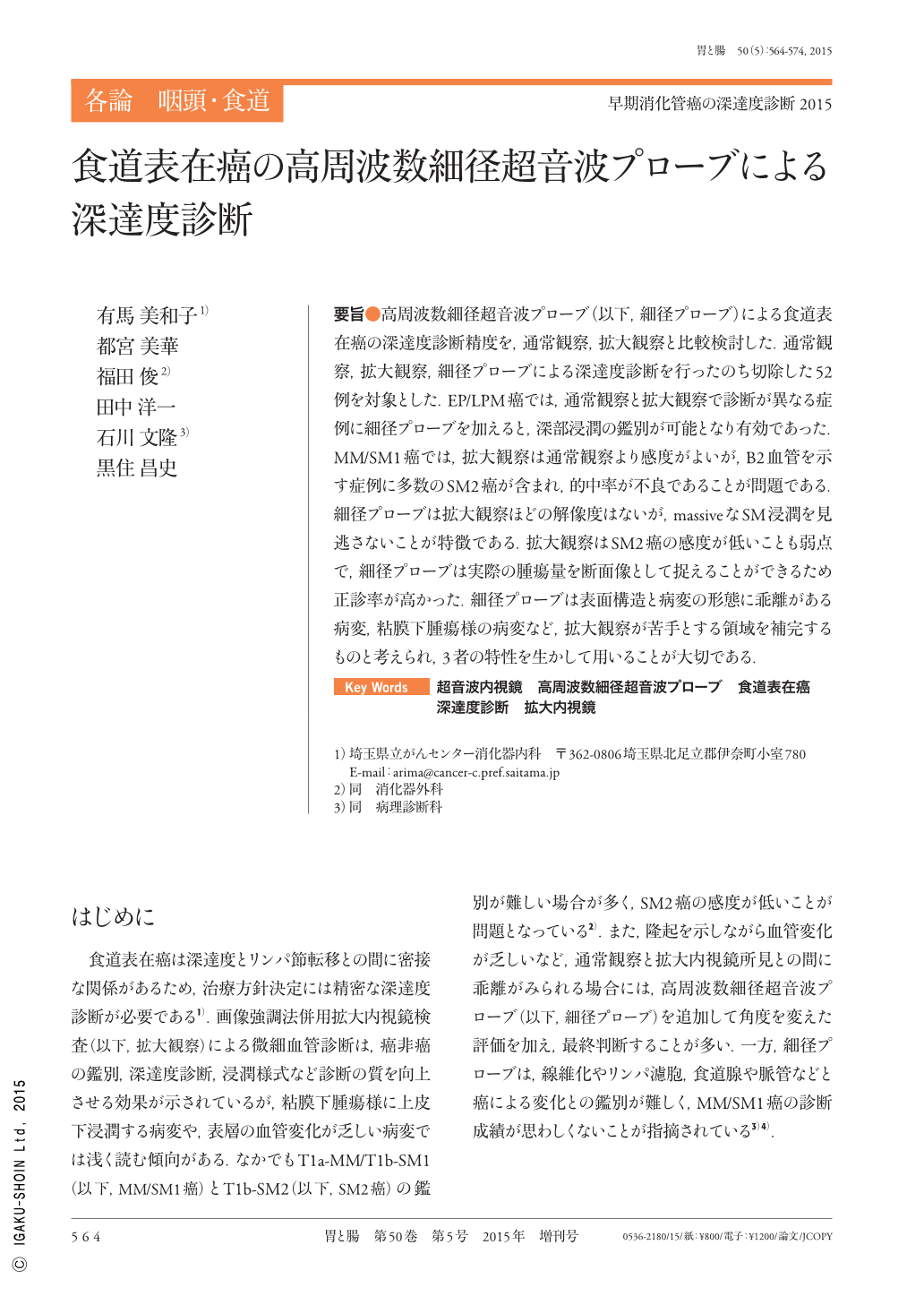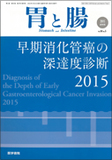Japanese
English
- 有料閲覧
- Abstract 文献概要
- 1ページ目 Look Inside
- 参考文献 Reference
- サイト内被引用 Cited by
要旨●高周波数細径超音波プローブ(以下,細径プローブ)による食道表在癌の深達度診断精度を,通常観察,拡大観察と比較検討した.通常観察,拡大観察,細径プローブによる深達度診断を行ったのち切除した52例を対象とした.EP/LPM癌では,通常観察と拡大観察で診断が異なる症例に細径プローブを加えると,深部浸潤の鑑別が可能となり有効であった.MM/SM1癌では,拡大観察は通常観察より感度がよいが,B2血管を示す症例に多数のSM2癌が含まれ,的中率が不良であることが問題である.細径プローブは拡大観察ほどの解像度はないが,massiveなSM浸潤を見逃さないことが特徴である.拡大観察はSM2癌の感度が低いことも弱点で,細径プローブは実際の腫瘍量を断面像として捉えることができるため正診率が高かった.細径プローブは表面構造と病変の形態に乖離がある病変,粘膜下腫瘍様の病変など,拡大観察が苦手とする領域を補完するものと考えられ,3者の特性を生かして用いることが大切である.
We compared the diagnostic accuracy of a high-frequency miniature ultrasonic probe(mini probe)for estimating the invasion depth of superficial esophageal cancer with that of conventional observation and image enhanced magnifying endoscopy. The study group comprised 51 patients with superficial esophageal cancer in whom the tumor invasion depth was evaluated using conventional endoscopy, magnifying endoscopy, and a mini probe. All patients subsequently underwent tumor resection. In patients with EP/LPM cancer in whom conventional and magnifying endoscopy resulted in different diagnoses, the additional use of a mini probe allowed the deep invasion depth to be determined and was thus advantageous. In patients with MM/SM1 cancer, magnifying endoscopy was more sensitive than conventional endoscopy. However, many patients with SM2 cancer were erroneously included among patients who showed type B2 vessels, and the low accuracy rate remains a problem. Although the resolution of a mini probe is lower than that of magnifying endoscopy, the former is characterized by the ability to accurately detect massive submucosal invasion. The low sensitivity of magnifying endoscopy for the diagnosis of SM2 cancer is also a weak point, and a mini probe could visualize the actual tumor volume as cross-sectional images, resulting in a high diagnostic accuracy. A mini probe may be able to compensate for the weak points of magnifying endoscopy, such as low diagnostic accuracy for lesions with considerable divergence between superficial structure and tumor morphology or for submucosal tumor-like lesions. The strong points of the mini probe, conventional endoscopy, and magnifying endoscopy should be utilized at the time of diagnosis.

Copyright © 2015, Igaku-Shoin Ltd. All rights reserved.


